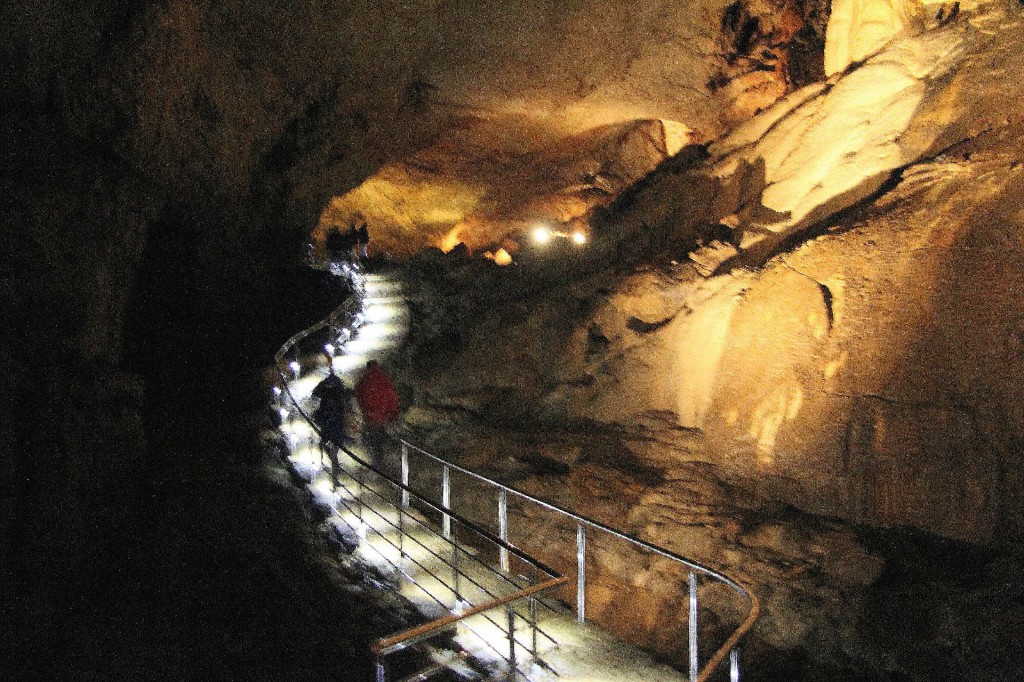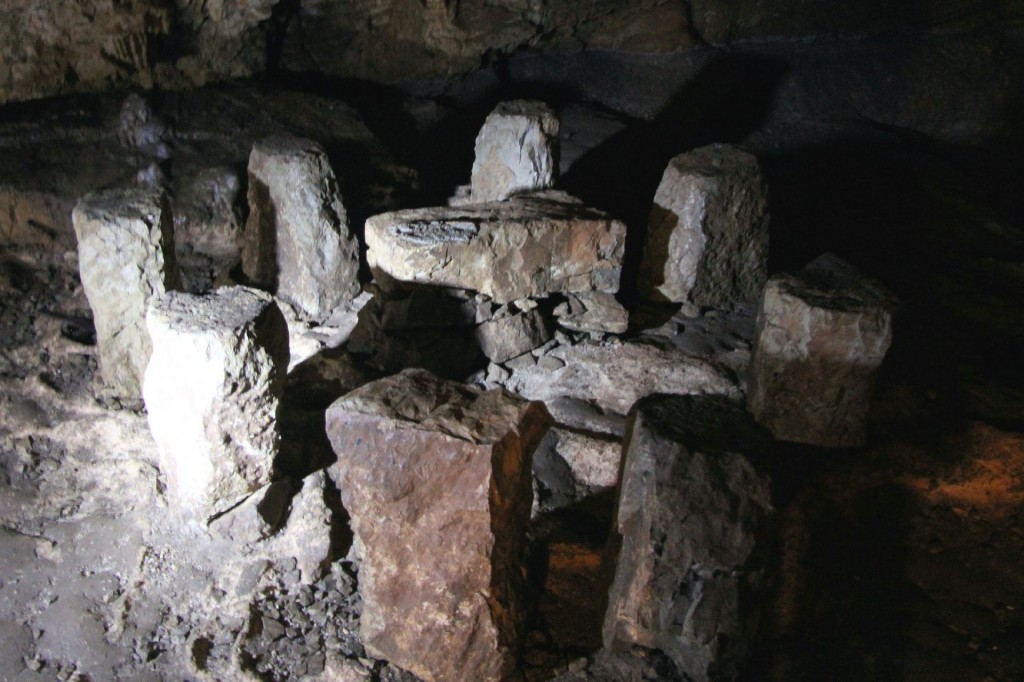 Most tourists traveling along the Adriatic Highway from the Montenegrin border in northern direction do not know anything about „Vjetrenica“, a cave in Herzegovina that is visible on a well-marked road sign along the Highway, around 30 km north from Dubrovnik near Slano. Strange enough, this is one of the most impressive caves in the Dinaric Alps mountain range!
Most tourists traveling along the Adriatic Highway from the Montenegrin border in northern direction do not know anything about „Vjetrenica“, a cave in Herzegovina that is visible on a well-marked road sign along the Highway, around 30 km north from Dubrovnik near Slano. Strange enough, this is one of the most impressive caves in the Dinaric Alps mountain range!
We decided to satisfy our curiosity and take a look by ourselves. A narrow asphalt road led us to the newly-opened border crossing with Bosnia and Herzegovina and further through a rough and mountainous karst area to the village of Ravno, on the edge of Popovo Polje. The field of Popovo Polje (“Priest’s field”) stretched in front of us, covered by extensive vineyards and grassland (photo 2). The plain is famous for its karstic phenomena, and particularly for the Trebišnjica river, a typical “sinking river”.
At a distance of 27 km from the Highway we reached the village and Orthodox monastery of Zavala, where we found the entrance of the “špilja” (cave). It was crowded: around thirty foreign tourists were waiting for the beginning of the guided tour (40-60 minutes), as such tours are organized each hour from 10 AM to 6 PM. We bought entrance tickets (€ 5.00 per person) and were provided with helmets and jackets (photo 3), as the constant temperature in the cave is around 11 degrees Centigrade. The guide gave us a lot of security instructions, which was really necessary, as the first part of the cave was very low and narrow, and we were surprised by a strong blast of cold wind!
The total length of the explored part of the cave is 6 km, but the trail for tourists (photo 4) – with protection rails and lighting – has a length of 550 meters (the depth of the cave is 25 m). In reality, geologists have predicted that Vjetrenica could stretch right to the Adriatic Sea and even up to the island of Šipan. The cave system is listed on the Tentative List of UNESCO protected areas.
 It was not difficult to understand why we got a helmet: at the first 150 meters of the cave the ceiling was very low and we had to bend down our head all the time until reaching a spacious “hall”. It became clear why this cave is called “Wind Cave”: as soon as we entered, the wind was blowing very strongly through the corridor, but stopped when we entered the first hall. A magical experience!
It was not difficult to understand why we got a helmet: at the first 150 meters of the cave the ceiling was very low and we had to bend down our head all the time until reaching a spacious “hall”. It became clear why this cave is called “Wind Cave”: as soon as we entered, the wind was blowing very strongly through the corridor, but stopped when we entered the first hall. A magical experience!
We saw many breath-taking passages and small underground lakes with rare endemic types of shellfish. The amphibious cave salamander Proteus anguinus (called “Human Fish” because of its skin color) is very rare and is adapted to a life in complete darkness.
 Archeological discoveries showed ancient cave bears and leopards, cave drawings that are estimated to be over 10,000 years old. Especially the “Golden Room” appeared to be very impressive (photo 1) and so was the “Turkish graveyard”, a group of stalagmites that reminded us of Turkish grave monuments. At the end of the trail is “Hajdučki stol”, a stone table and chairs made by the first inhabitants – “hajduk” means outlaw or freedom fighter – of this cave (photo 5).
Archeological discoveries showed ancient cave bears and leopards, cave drawings that are estimated to be over 10,000 years old. Especially the “Golden Room” appeared to be very impressive (photo 1) and so was the “Turkish graveyard”, a group of stalagmites that reminded us of Turkish grave monuments. At the end of the trail is “Hajdučki stol”, a stone table and chairs made by the first inhabitants – “hajduk” means outlaw or freedom fighter – of this cave (photo 5).
After our cave tours we had a real “Herzegovinian” snack in the nearby restaurant called “Zavala”: excellent smoked ham, cheese and “kajmak” from the region. To be recommended!

[…] visited caves all over the Balkans: from Postojna in Slovenia to the Magura Cave in Bulgaria, from Vjetrenica in Bosnia & Herzegovina to the Stopića Cave in Serbia. They were all impressive, and each cave […]
[…] a tour through the beautiful hinterland. Or pass the border to Bosnia and Herzegovina and visit the Vjetrenica Cave. Or book a day trip by boat to the Elaphite […]